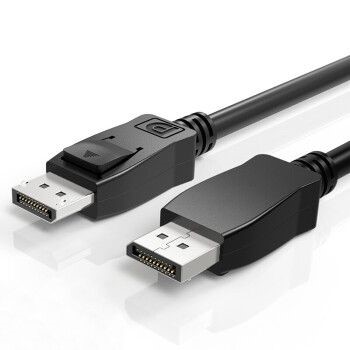It has been almost two years since the official announcement of the DisplayPort 2.0 interface protocol (hereinafter collectively referred to as the DP2.0 protocol), but until recently there was no information about the launch of related products. According to the Video Electronics Standards Association (VESA), a display equipped with a DP2.0 interface is under development, and new products will use a new system chip, which is expected to debut in the second half of 2021.
According to the design plan when the DP2.0 protocol was released in 19, it has a transmission bandwidth of up to 80Gbps, and uses a brand-new 128/132b encoding mechanism. Compared with the previous generation of the DP1.4 protocol, the data bandwidth performance of the DP2.0 protocol has been increased by 3 times, and the efficiency has been increased by up to 97%.
In addition, compared with the latest HDMI 2.1 protocol, the DP2.0 protocol has 1.6 times higher transmission bandwidth performance. In addition, the DP2.0 protocol allows signals to be carried on the USB4/Raiden 4 interface, but it will be limited by the performance of the USB4/Raiden 4 protocol, and is limited to a maximum transmission bandwidth of 40Gbps.
With such excellent transmission performance, the DP2.0 protocol can output 16K@60Hz (DSC), 10K@60Hz lossless, 4K@240Hz, and dual-screen 8K@120Hz video output on a single screen. It also supports HDR-10 video features. Of course, the dual-screen 4K@144Hz lossless, which game enthusiasts like, is no problem.
In short, the DP2.0 protocol allows higher display resolution, faster refresh rate, and supports dynamic HDR functions, which can satisfy the use of more abundant scenarios. However, related products will not be unveiled until the end of 21, and it may take a long time for them to be popularized. Just like the HDMI2.1 protocol announced in 2017, it will only enter the vision of ordinary consumers in 2020.
This is largely due to the fact that supporting products have not yet become main-stream and currently there are few display devices on the market that exceed 8K@60Hz and 4K@120Hz. The mainstream or higher-end display devices are still mainly 4K@60Hz, 4K@120Hz, 2K@240Hz, not to mention that not everyone is using this type of display device.

Therefore, in terms of market status and user needs, the DP2.0 protocol is difficult to be used by ordinary consumers in a short period of time, and the DP1.4 protocol and HDMII 2.1 protocol will still be the mainstay at the moment. After all, whether it is the HDMI 2.1 protocol with a bandwidth of up to 48Gbps or the DP1.4 protocol with a bandwidth of up to 32Gbps, it can meet the needs of daily use.
In addition, even if it is positioning high-end or professional display equipment, using HDMI 2.1 protocol or DP1.4 protocol can meet a variety of application scenarios. Subdivided into their respective application areas, multimedia terminals such as TVs and game consoles basically use the HDMI protocol, while the DP protocol mostly appears in terminals such as monitors and graphics cards.
Secondly, what is more surprising is that although the terminals adopting the DP1.4 protocol and the HDMI 2.1 protocol are still relatively high-end, the supporting connection wires have entered the consumer's field of vision early. For example, the price is not much different from the previous generation product, but the experience has doubled the HDMI 2.1 protocol cable.
Even professional accessory brands like UGREEN have launched a variety of products that support DP1.4 protocol or HDMI 2.1 protocol, and products such as expansion docks are also the first to use DP1.4 protocol interface to expand 8K displays which becomes a breeze, of course, it also facilitates users to choose reliable products that are not false.
There are rumors that UGREEN will also launch DP2.0 supporting products for the first time, and users who need it can pay attention to it. Back to the current mainstream display devices, although the interface has not yet used the DP1.4 protocol or the HDMI 2.1 protocol, the choice of the connection line can completely choose the latest version of the corresponding interface, and try to get it in place in one step to facilitate future upgrades.

















View More(Total0)Comment Lists